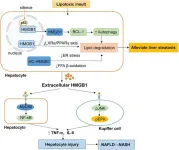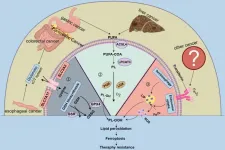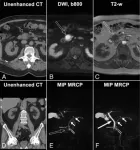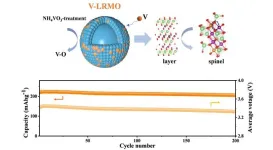Liver diseases, both acute and chronic, continue to pose significant clinical challenges due to high morbidity and mortality rates. Acute liver injury (ALI) caused by acetaminophen (APAP) overdose, hepatic ischemia-reperfusion injury (HIRI), and chronic conditions like nonalcoholic fatty liver disease (NAFLD) and alcohol-associated liver disease (ALD) are influenced by HMGB1-mediated pathways. HMGB1 is released from injured or necrotic liver cells and triggers inflammatory responses. Its circulating levels have been associated with disease severity in liver conditions, marking it as a promising biomarker and therapeutic target.
HMGB1 Structure and Functions
HMGB1 is a non-histone nuclear protein with three distinct domains responsible for DNA-binding and regulatory functions. Within the nucleus, HMGB1 aids in DNA repair, chromosomal maintenance, and cell cycle regulation. Once released extracellularly, it binds to receptors such as RAGE and TLR4, amplifying inflammatory signaling and contributing to liver damage through the activation of immune cells. Additionally, HMGB1 plays a role in autophagy, a process integral to cell survival and liver tissue regeneration.
Receptors and Signaling Pathways
HMGB1's interactions with its primary receptors, RAGE and TLR4, are essential to its role in liver disease. Upon binding, these receptors initiate pro-inflammatory signaling pathways such as the NF-κB and mitogen-activated protein kinases (MAPK) cascades, exacerbating liver inflammation and injury. These interactions also contribute to the progression of conditions like NAFLD, ALD, and liver fibrosis. Importantly, the HMGB1-RAGE axis also plays a role in hepatocellular carcinoma (HCC), influencing tumor proliferation, immune evasion, and metastasis.
Post-Translational Modifications (PTMs)
The functional diversity of HMGB1 is heavily regulated by its PTMs, including acetylation, phosphorylation, oxidation, and lactylation. These modifications control the release, localization, and activity of HMGB1, impacting its role in liver disease. For instance, acetylation of HMGB1 facilitates its translocation from the nucleus to the cytoplasm, contributing to inflammation in ALD and sepsis. Phosphorylation similarly aids in HMGB1's extracellular release, while oxidation alters its interactions with receptors, enhancing fibrotic processes and tumor cell migration. A novel PTM, lactylation, has been linked to macrophage activation in HIRI, further expanding the understanding of HMGB1's regulatory mechanisms.
Roles of HMGB1 in Acute Liver Diseases
In acute liver diseases like APAP-induced liver injury, HMGB1 serves as a key mediator of immune responses, promoting the recruitment of neutrophils and macrophages, which exacerbate liver damage. The HMGB1-TLR4 signaling pathway has been particularly implicated in the inflammatory cascades following liver injury. Therapeutic strategies targeting HMGB1, such as monoclonal antibodies and inhibitors of its release, have shown promise in reducing liver damage in animal models. Similarly, in HIRI, inhibiting HMGB1 release has been effective in mitigating liver damage and inflammation, emphasizing its potential as a therapeutic target.
Roles of HMGB1 in Chronic Liver Diseases
In chronic liver diseases like NAFLD and ALD, HMGB1 plays dual roles depending on its cellular localization. Extracellular HMGB1 promotes inflammatory pathways that accelerate the progression from simple steatosis to more severe forms like nonalcoholic steatohepatitis (NASH). Intracellularly, HMGB1 appears to protect against lipotoxicity by maintaining endoplasmic reticulum (ER) homeostasis. Additionally, in liver fibrosis, HMGB1 activates hepatic stellate cells (HSCs), contributing to the fibrotic response, while its modulation of immune responses through macrophage polarization further exacerbates fibrosis.
Therapeutic Potential
Given HMGB1’s critical involvement in liver disease pathogenesis, therapeutic strategies aimed at modulating its release, function, or receptor interactions have gained interest. Anti-HMGB1 antibodies, small-molecule inhibitors, and natural compounds like curcumin and glycyrrhizin show potential in alleviating liver inflammation and fibrosis. Furthermore, targeting specific PTMs of HMGB1, such as acetylation and lactylation, offers new avenues for therapeutic interventions, particularly in treating liver fibrosis and HCC.
Conclusions
HMGB1 is an integral player in liver disease, influencing both inflammatory and fibrotic pathways. Its roles in acute liver injury, chronic conditions, and liver cancer make it a valuable diagnostic and therapeutic target. Ongoing research into HMGB1's signaling mechanisms, PTMs, and receptor interactions promises to yield new treatments for liver diseases. However, further clinical studies are needed to fully realize the therapeutic potential of targeting HMGB1.
Full text
https://www.xiahepublishing.com/2310-8819/JCTH-2024-00317
The study was recently published in the Journal of Clinical and Translational Hepatology.
The Journal of Clinical and Translational Hepatology (JCTH) is owned by the Second Affiliated Hospital of Chongqing Medical University and published by XIA & HE Publishing Inc. JCTH publishes high quality, peer reviewed studies in the translational and clinical human health sciences of liver diseases. JCTH has established high standards for publication of original research, which are characterized by a study’s novelty, quality, and ethical conduct in the scientific process as well as in the communication of the research findings. Each issue includes articles by leading authorities on topics in hepatology that are germane to the most current challenges in the field. Special features include reports on the latest advances in drug development and technology that are relevant to liver diseases. Regular features of JCTH also include editorials, correspondences and invited commentaries on rapidly progressing areas in hepatology. All articles published by JCTH, both solicited and unsolicited, must pass our rigorous peer review process.
Follow us on X: @xiahepublishing
Follow us on LinkedIn: Xia & He Publishing Inc.
END







